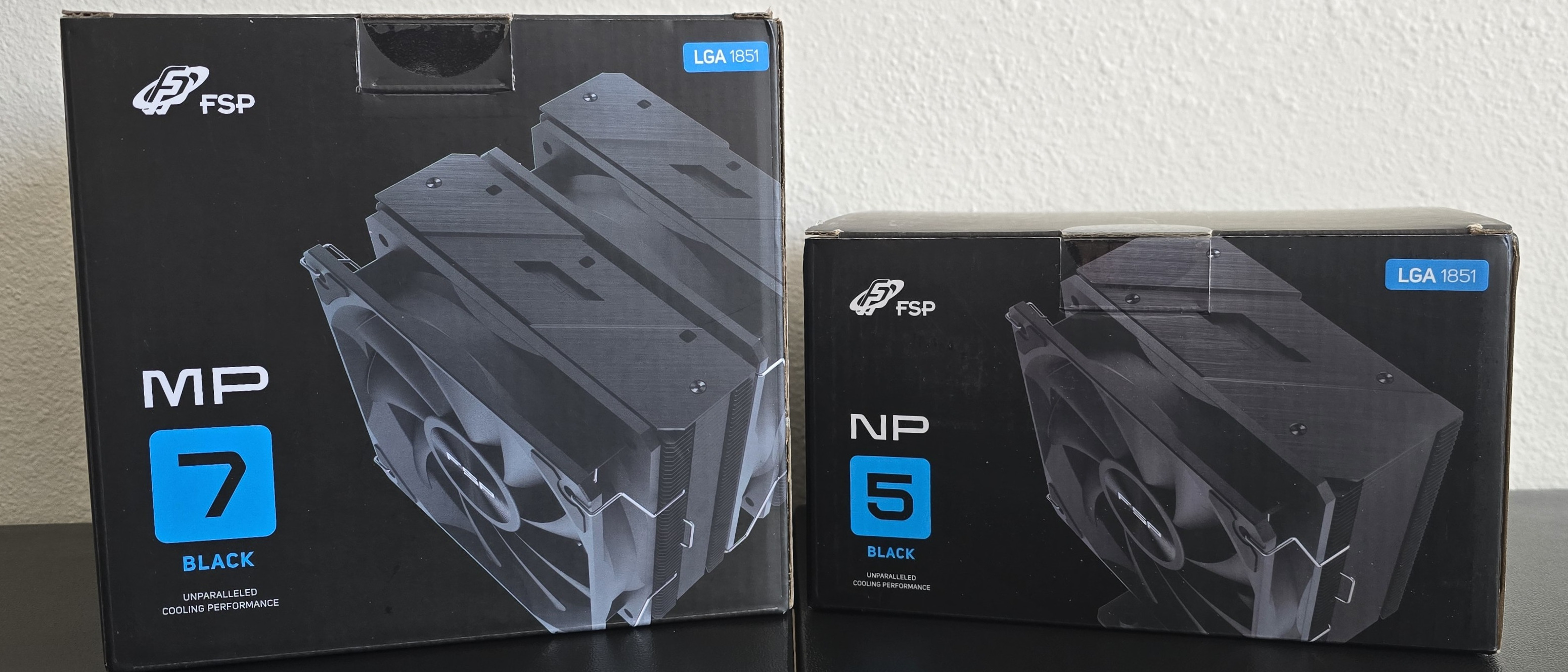Why you can trust Tom's Hardware
CPU-only thermal results without power limits
Without power limits enforced on Intel’s Core Ultra 9 285K and i7-14700K CPUs, the CPU will hit its peak temperature (TJ Max) and thermally throttle with even the strongest of air coolers and even most liquid coolers on the market. When the CPU reaches its peak temperature, I have measured the CPU package power to determine the maximum wattage cooled to best compare their performance. It’s important to note that thermal performance can scale differently depending on the CPU it’s being tested with.
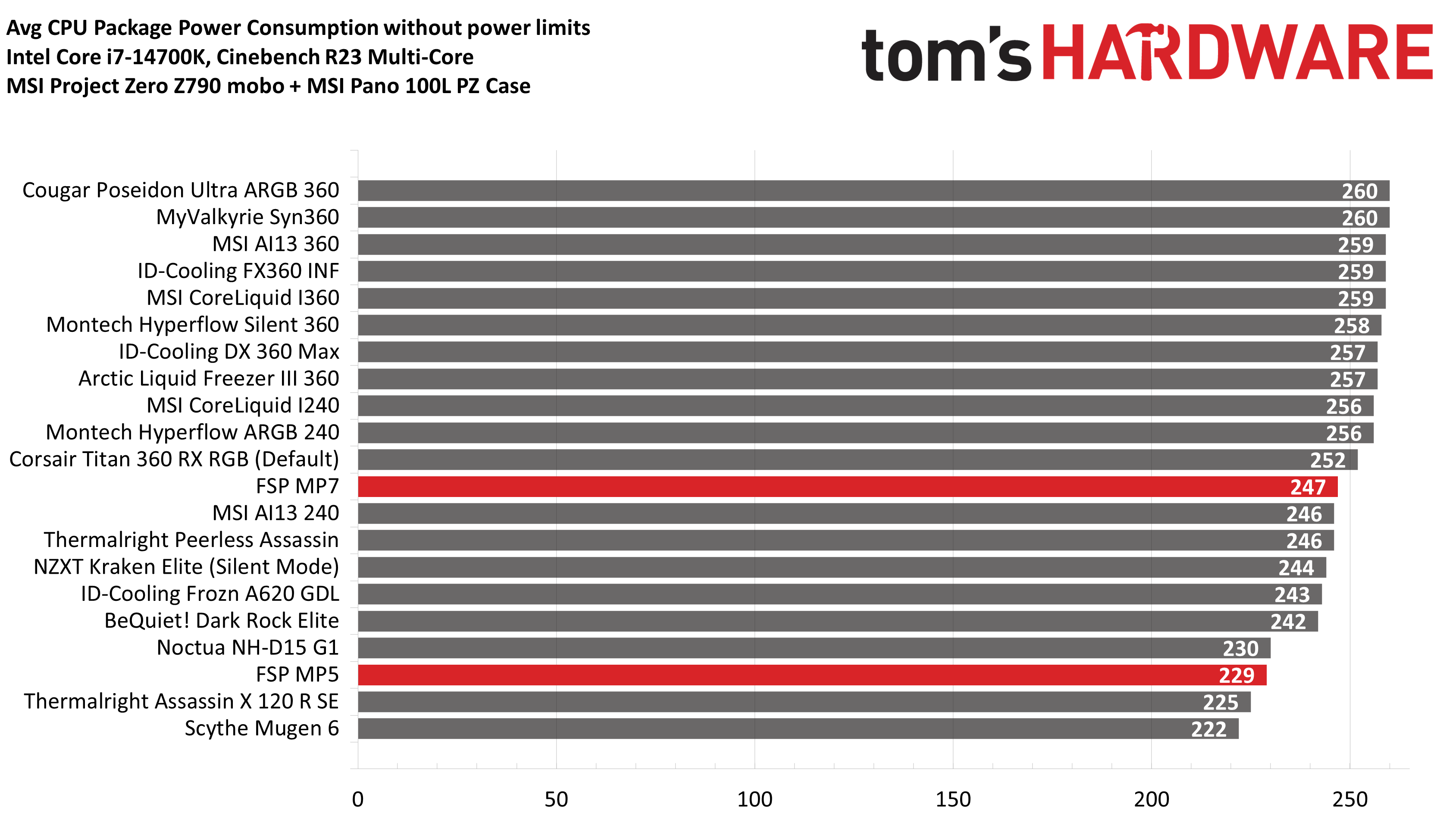
FSP’s MP7 does fairly well here – outperforming the rival Peerless Assassin 140 from Thermalright as well as the Dark Rock Elite by BeQuiet! and the Frozn A620 from ID-Cooling – at least when paired with Intel’s Core i7-14700K!
However, just because it does well with Intel’s Core i7-14700K doesn’t necessarily mean it will perform as strongly with other CPUs. When I tested it with the “Arrow Lake” Core Ultra 9 285, which has a shifted hotspot, the MP7 didn’t perform quite as well – being beaten by both ID-Cooling’s Frozn A620 and Thermalright’s Peerless Assassin 140. I would expect similar behavior to occur on AMD Ryzen-based systems.
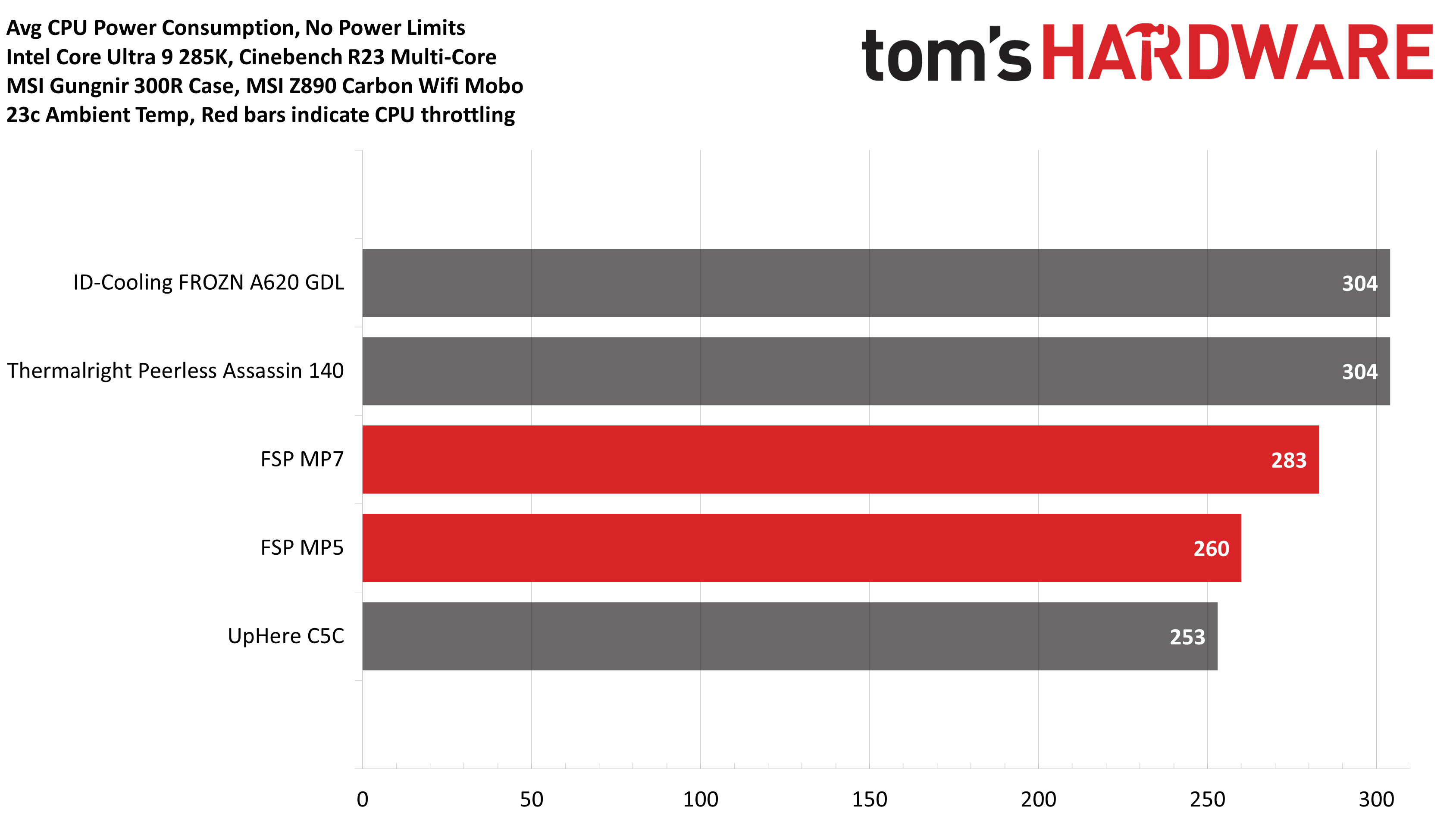
To achieve these levels of thermal dissipation, the fans of the FSP MP7 reach up to 46.3 dBA. This is a little louder than most air coolers on the market. FSP’s entry-level model, the NP5, has much lower noise levels – only reaching 42.4 dBA, one of the quietest results in our recent testing.
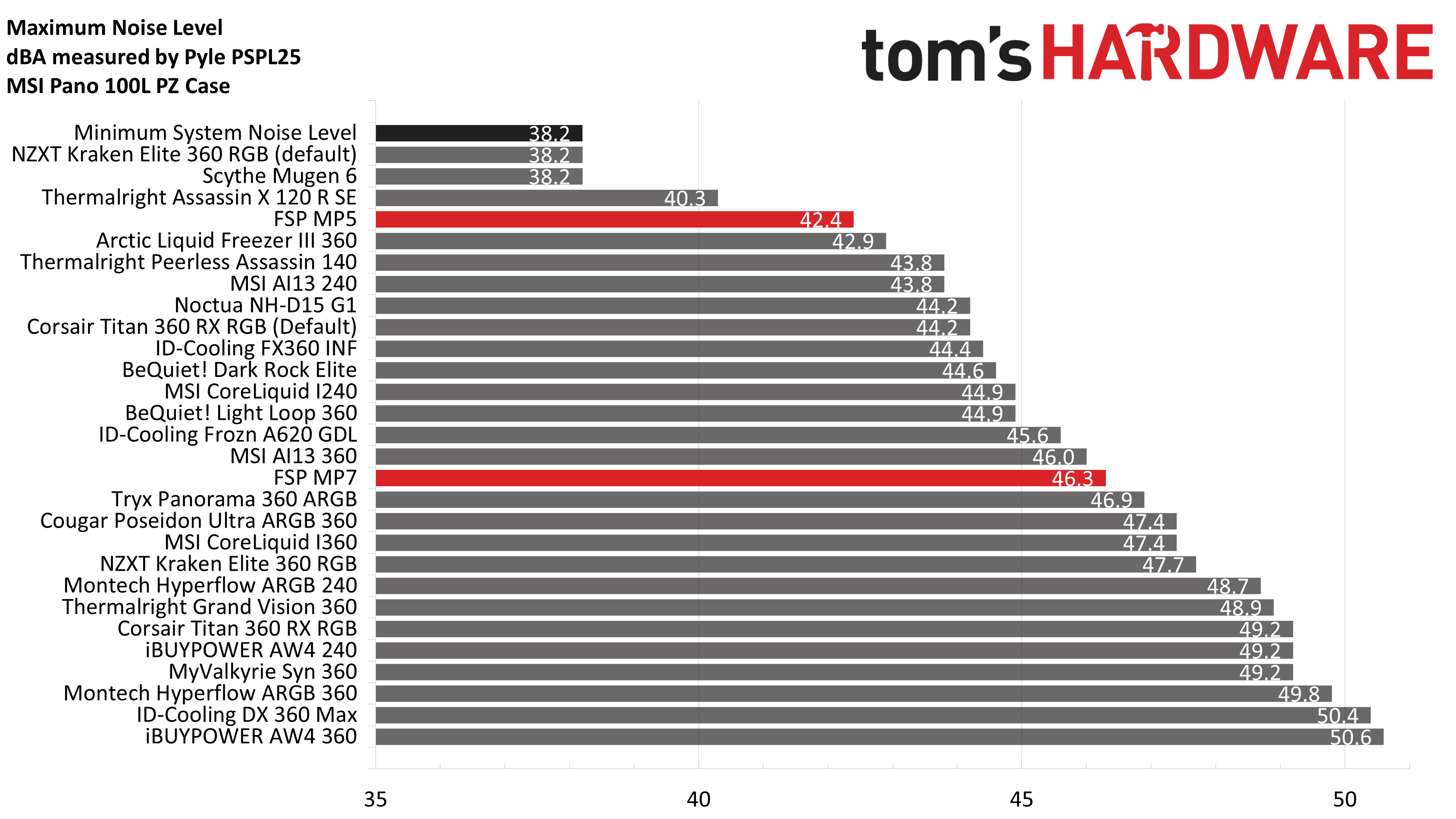
CPU-only thermal results with noise-normalized to 38.9 dBA
Finding the right balance between fan noise levels and cooling performance is important. While running fans at full speed can improve cooling capacity to some extent, the benefits are limited and many users prefer a quieter system.
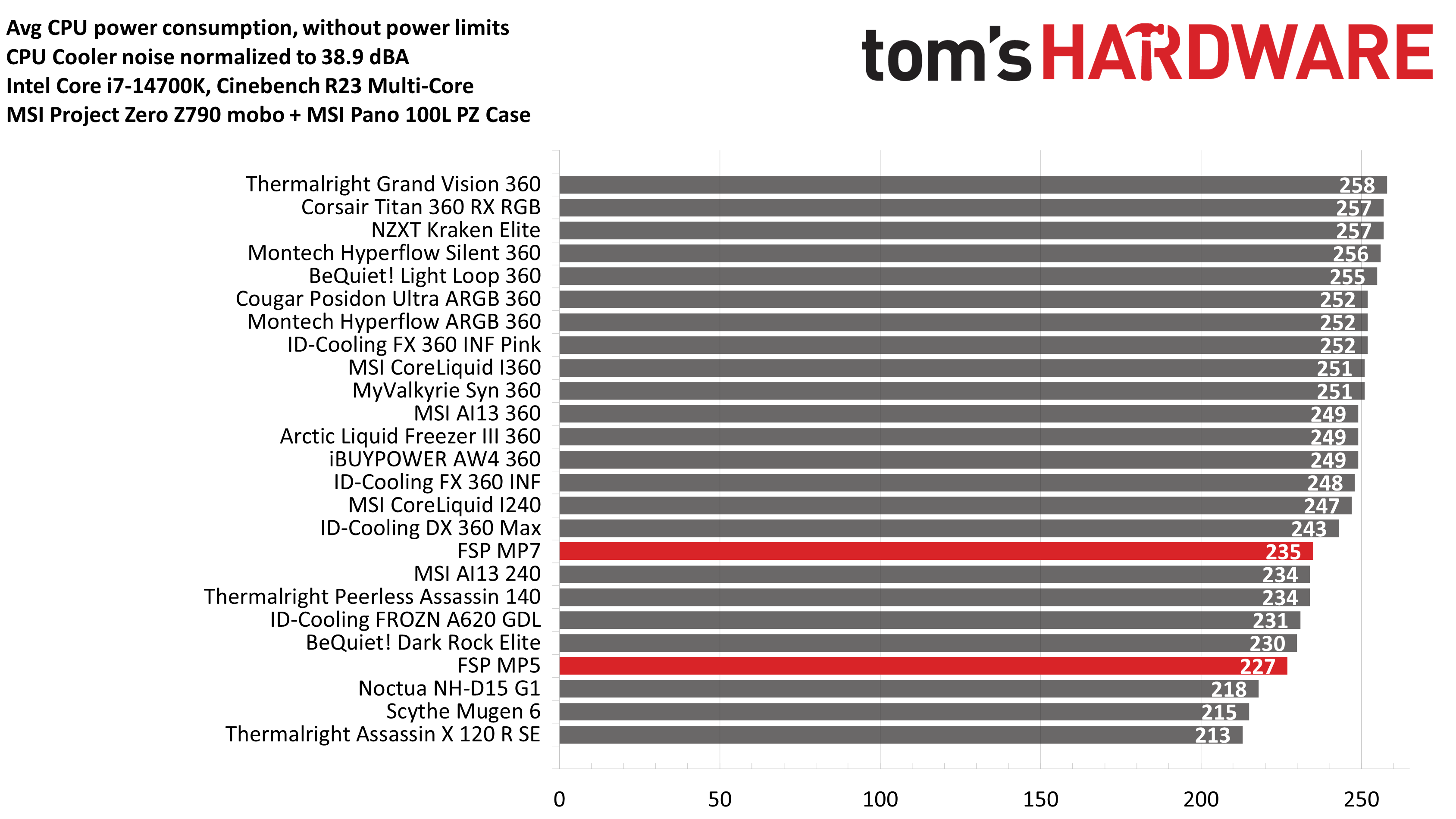
With this noise-normalized test, I’ve set noise levels to 38.9 dBA using the i7-14700K system. This is a low volume level, but slightly audible to most people. Both of FSP’s air coolers did well here! The MP7 slightly outperformed competing models from Thermalright and ID-Cooling. FSP’s MP5 cooled 227W, significantly more than the 213W cooled by Thermalright’s Assassin X 120 R SE!
253W results
My earlier reviews have focused more on tests with both the CPU and GPU being stressed, but many of y’all have indicated that you would like to see more CPU-only tests. In response, I’ve started testing Intel’s “Arrow Lake” Core Ultra 9 285K with a 253W limit. My current results for this test are limited, but this will grow as I have time to test more coolers.
Get Tom's Hardware's best news and in-depth reviews, straight to your inbox.
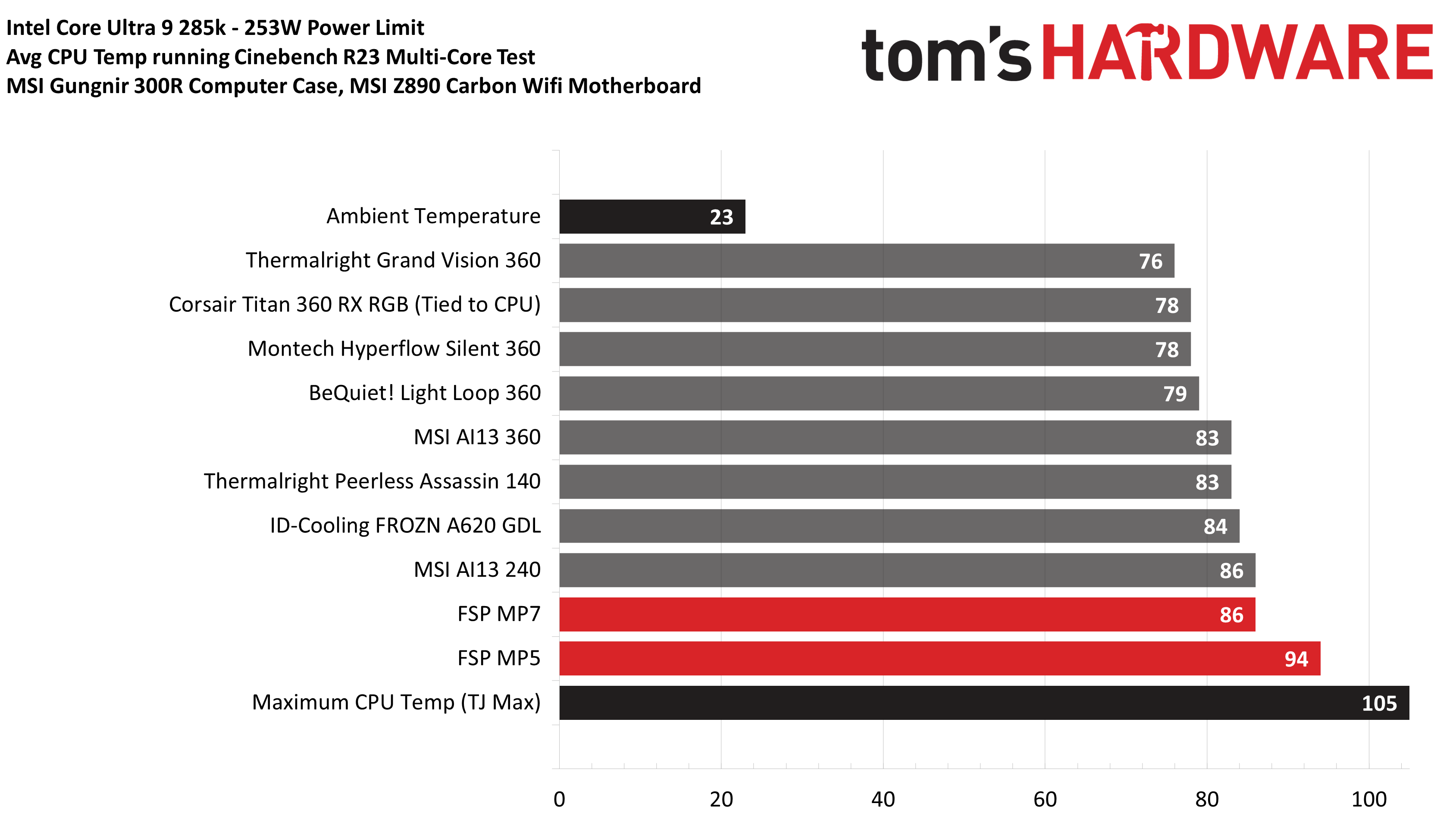
Testing with the default power limits of 253W shows reasonable performance, but the FSP coolers are inferior to that provided by competing Thermalright and ID-Cooling options.
135W CPU + 290W GPU results
Testing a CPU Cooler in isolation is great for synthetic benchmarks, but doesn’t tell the whole story of how it will perform. I’ve incorporated two tests with a power limit imposed on the CPU, while also running a full load on MSI’s GeForce RTX 4070 Ti SUPER 16G VENTUS 3X.
The CPU power limit of 135W was chosen based on the worst CPU power consumption I observed in gaming with Intel’s Core Ultra 9 285K, which was in Rise of the Tomb Raider.
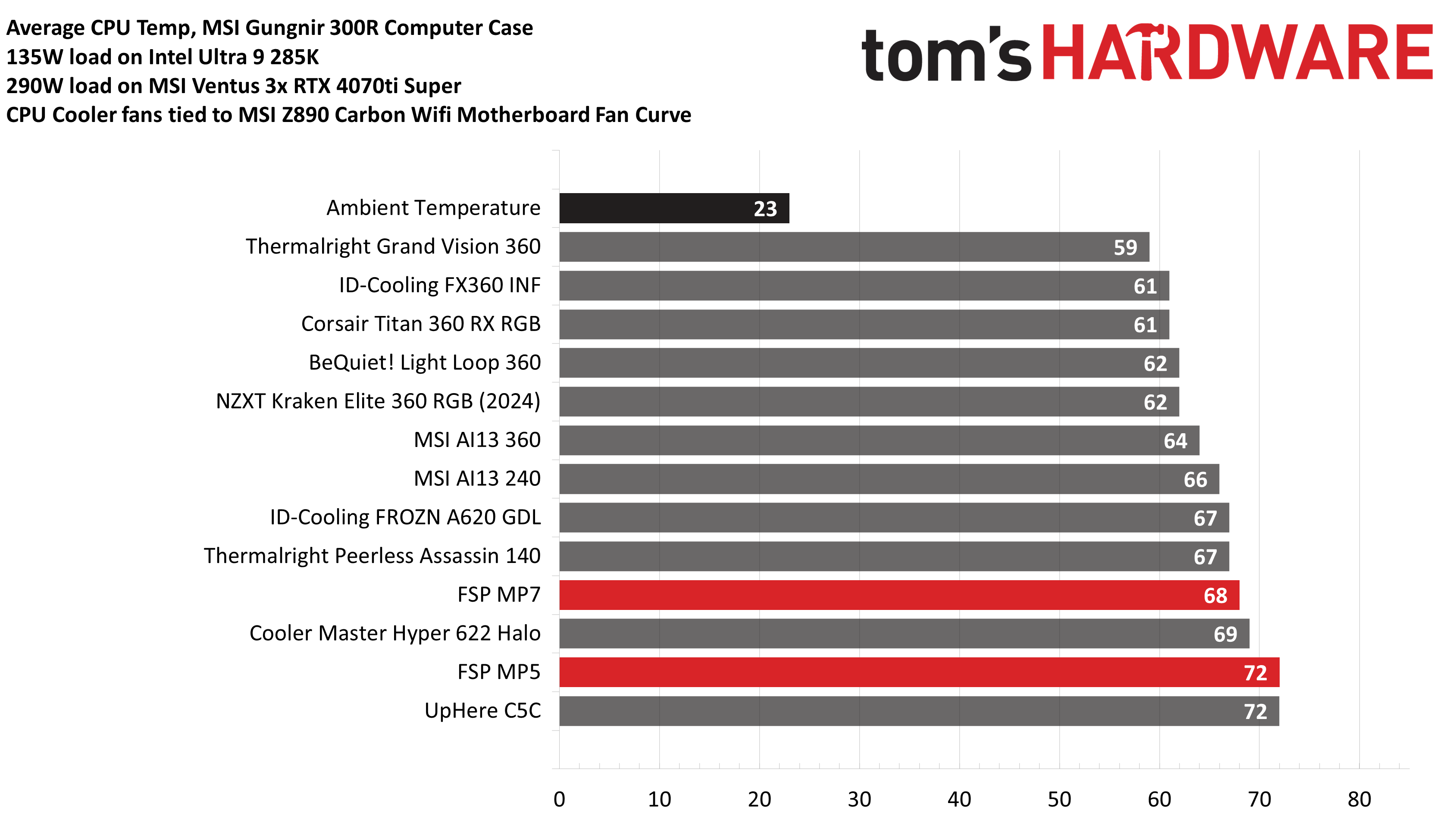
In this test, FSP’s MP7 performed reasonably but was again slightly outperformed by competing products from Thermalright and ID-Cooling. I need to test more air coolers on this system for more complete comparative information.
The noise levels weren’t bad, per se, but they were the worst I’ve measured in this test thus far at 42.4 dBA for the FSP MP7. The entry-level FSP NP5 was a bit quieter, only reaching 40.3 dBA.
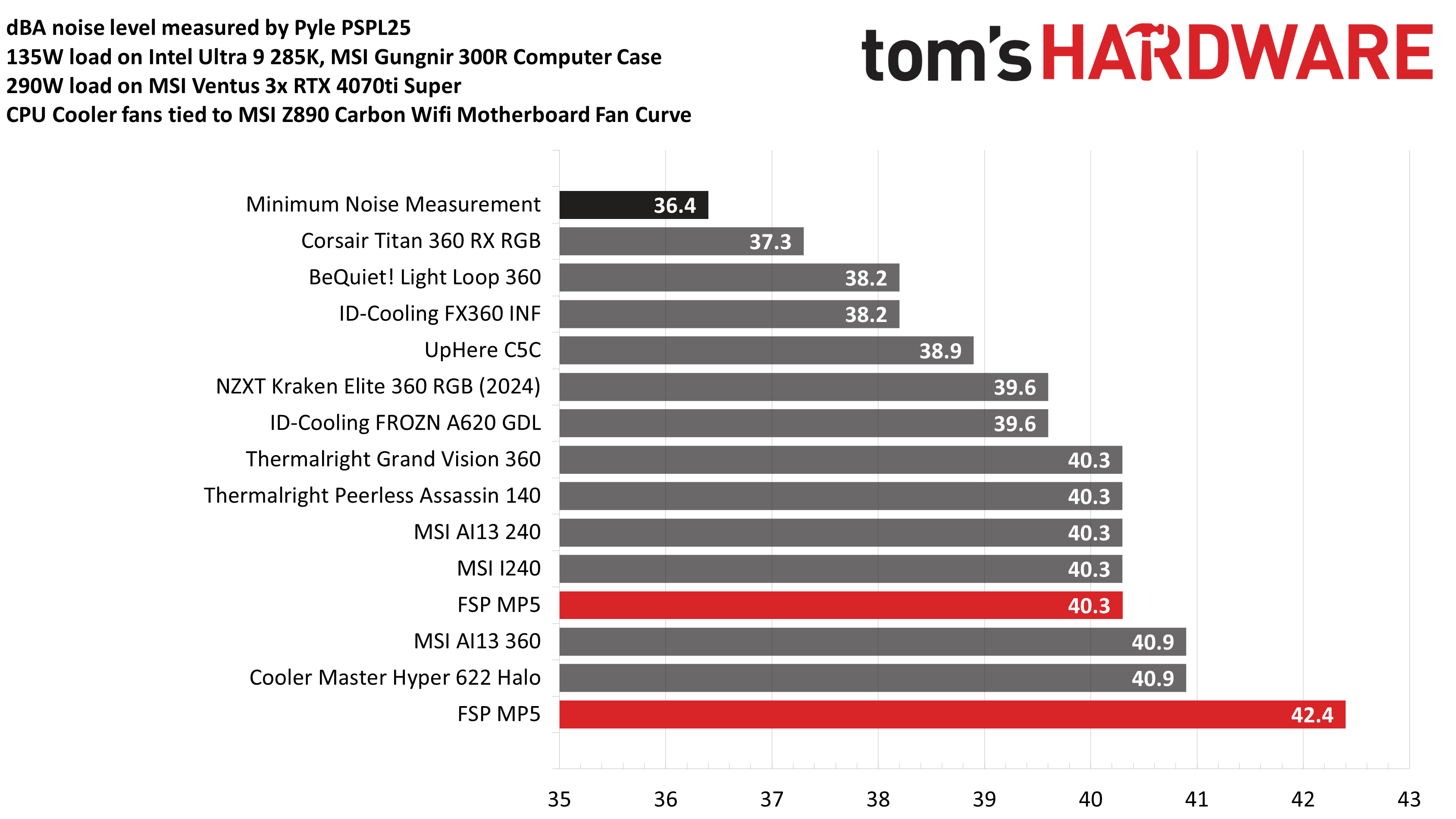
85W CPU + 290W GPU results
Our second round of CPU + GPU testing is also performed with Arrow Lake. The power limit of 85W was chosen based on typical power consumption in gaming scenarios using the Core Ultra 9 285K CPU. This should be fairly easy for most coolers. The main point of this test is to see how quietly (or loudly) a cooler runs in low-intensity scenarios.
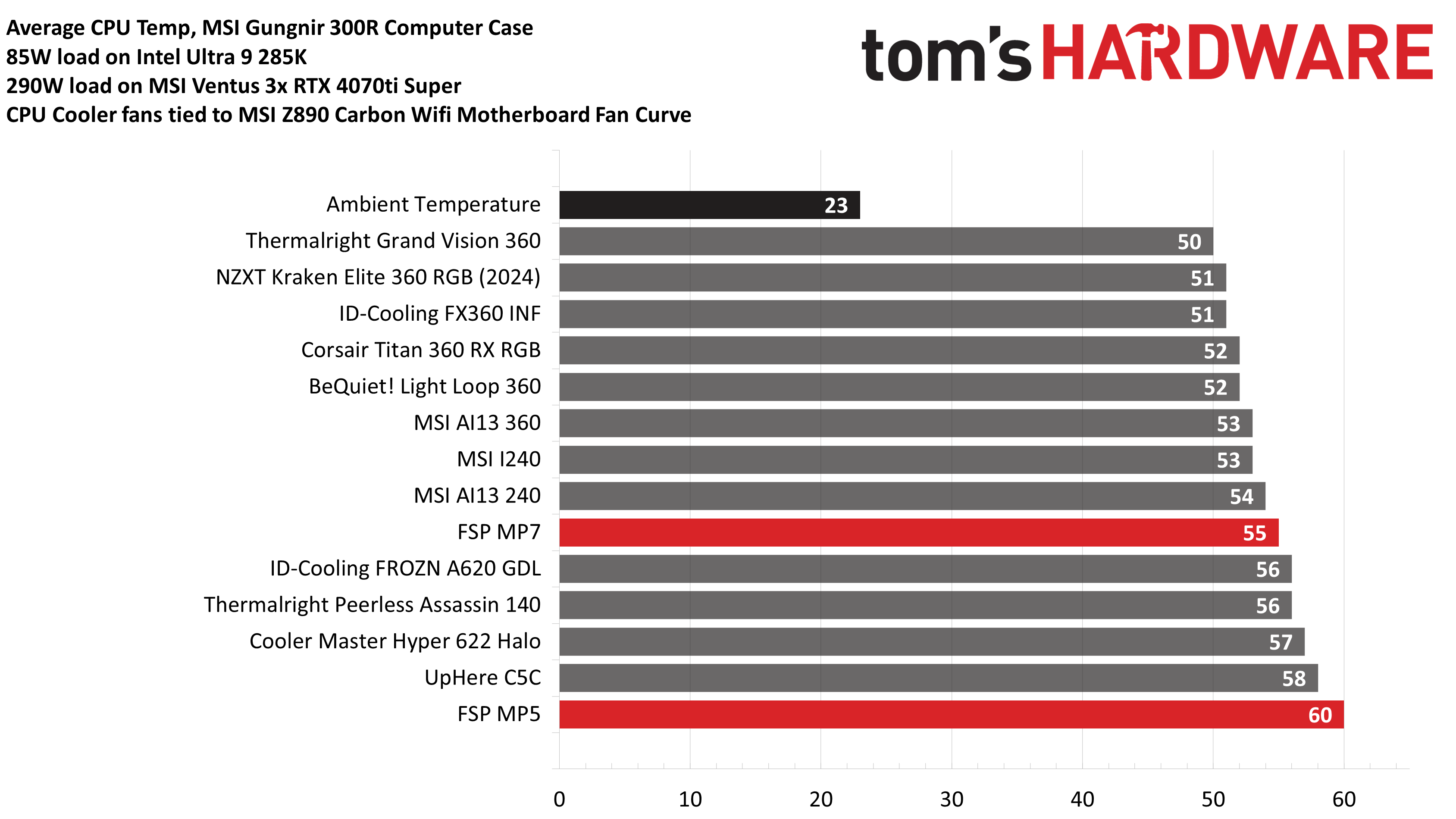
With a CPU temperature of 55C, FSP’s MP7 surprised me by outperforming competing coolers from both Thermalright and ID-Cooling. However, that victory came at the cost of noise levels. While the result of 39.6 dBA isn’t loud per se, it is the loudest result of all coolers I’ve tested in this scenario. The weaker NP5 model runs quieter at only 38.2 dBA, with the tradeoff of higher temps.
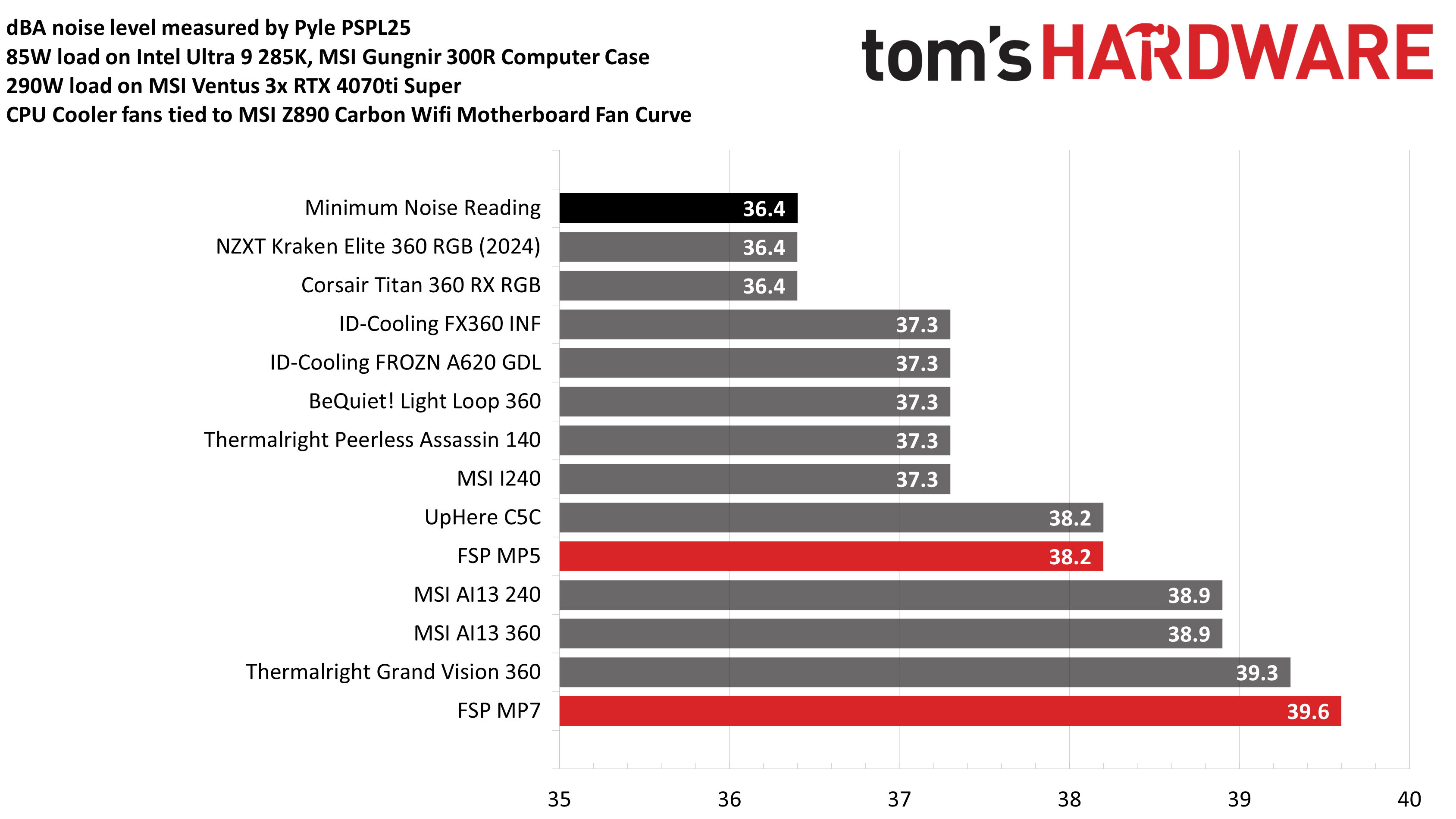
Conclusion

FSP’s MP7 and NP5 are both reasonably well-performing air coolers. I found the entry-level NP5 to be more impressive because it is easier to install, performs more consistently, and retains almost all of its maximum performance when noise-normalized. At only $27.99 USD, it has everything you need from a basic air cooler.

Albert Thomas is a contributor for Tom’s Hardware, primarily covering CPU cooling reviews.
-
MergleBergle just out of curiousity, I've noticed that most of the cooling/case review focus on Intel. With AMD cpus starting to gain a large amount of the desktop market share, why aren't we seeing cooler reviews with AMD stuff? Is it just because Intel stuff is stupidly hot and power hungry?Reply -
thestryker I wonder what the point of using NP (5) vs MP (7) is because it just seems like an unnecessary confusion point to me.Reply
These coolers seem to fall entirely into the okay category, but assuming you have the room (and it's available in your region) it doesn't seem like the Thermalright Phantom Spirit Peerless Assassin 140 is going to be dethroned any time soon. Of course they've also got the Royal Pretor and now I'm seeing a Frost Vortex one or both of which may be the new air cooler king. -
Albert.Thomas Reply
For a while, I used to test with both Intel's i7-13700K and Ryzen 7 7700X - but the performance of coolers with those CPUs was similar enough as to be redundant. That said, there were a few interesting exceptions where a cooler performed worse or better on Intel or AMD.MergleBergle said:just out of curiousity, I've noticed that most of the cooling/case review focus on Intel. With AMD cpus starting to gain a large amount of the desktop market share, why aren't we seeing cooler reviews with AMD stuff? Is it just because Intel stuff is stupidly hot and power hungry?
I am interested in adding Ryzen 9950X3D to future testing for both cases and coolers. -
Albert.Thomas Looking at this review, I suppose I should have made one thing more clear:Reply
These coolers seem to perform better on Raptor Lake CPUs than they do Arrow Lake. There's always the possibility I messed something up, but I'm fairly confident that wasn't the case :p
